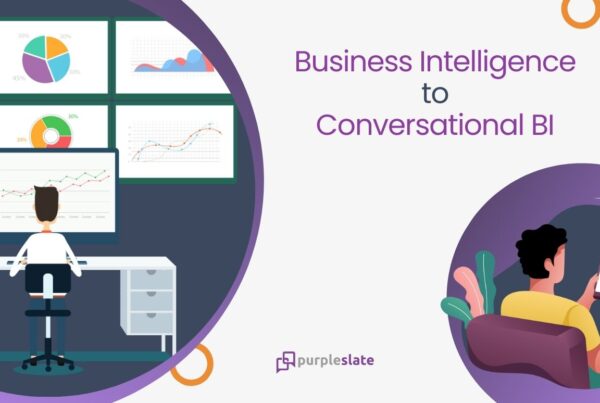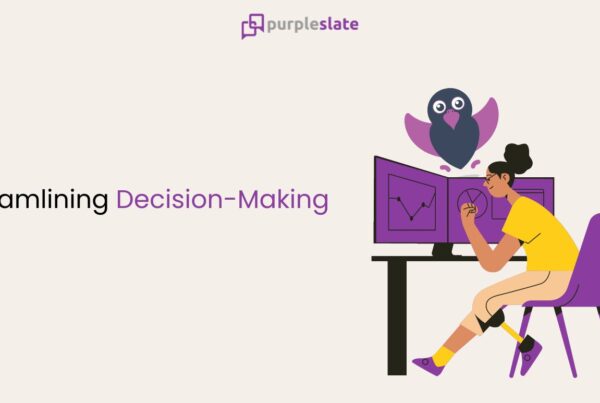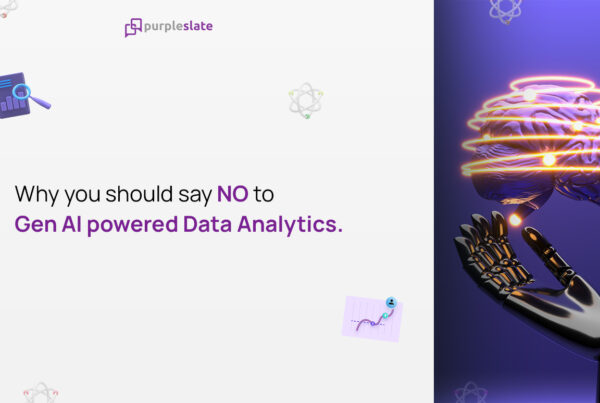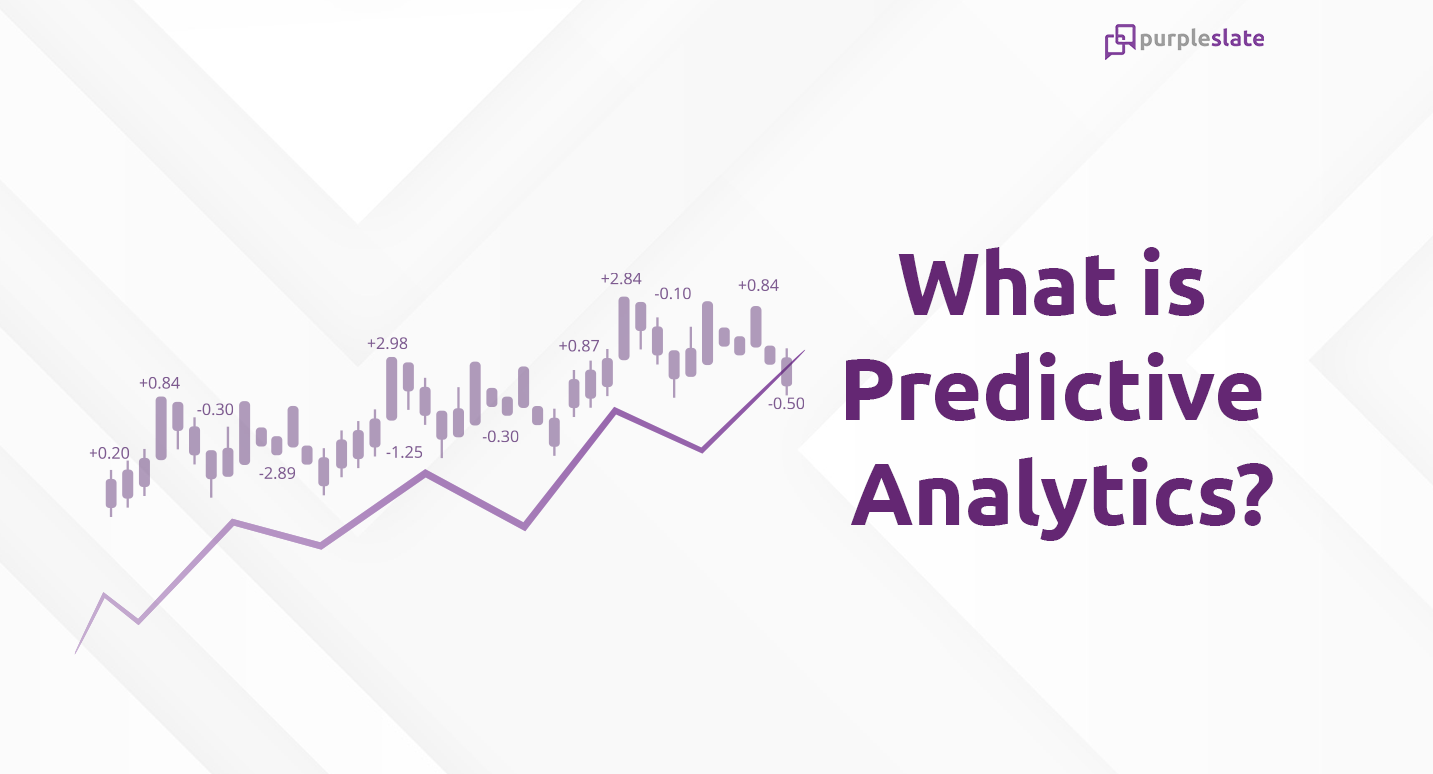
Introduction
In today’s world, information is true power. Information on what happened, what’s happening, and most importantly, what’s going to happen. Organizations empowered with predictive analytics have always been able to stay ahead of the curve because of the headstart that they got with the forecast of market conditions, and impending volatilities in the economy.
What is Predictive Analytics?
IBM defines Predictive Analytics (PA) as “a branch of advanced analytics that makes predictions about future outcomes using historical data combined with statistical modeling, data mining techniques, and machine learning. Companies employ it to find patterns in this data to identify risks and opportunities”
PA is one such defining technology of this century that it has effectively disrupted the way businesses function. It can be considered the third stage of evolution in an organization’s data analytics maturity curve.
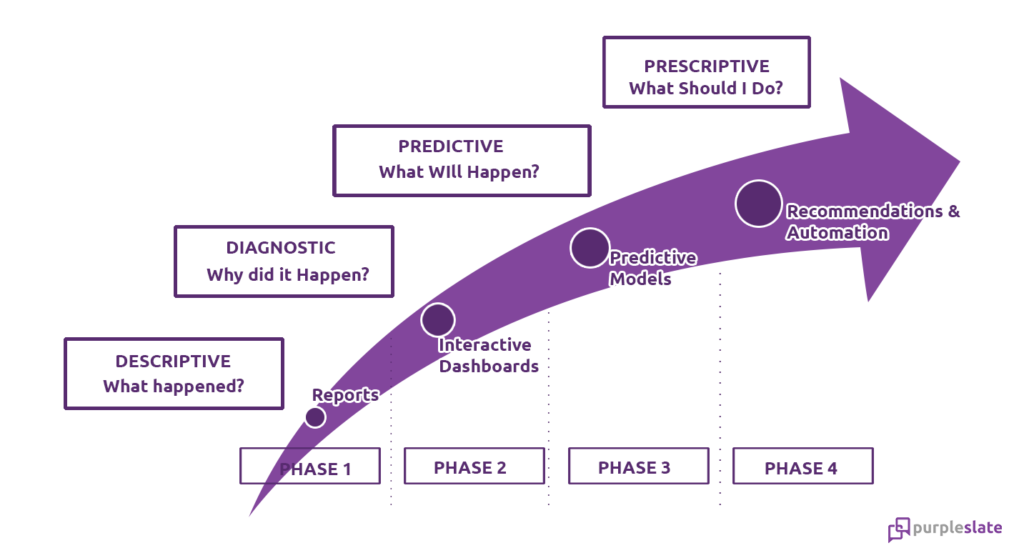
The uses of PA are widespread across industries and their uses are varied including, but not limited to
- Helping organizations address both employee and customer churn
- Predicting payment defaults by analyzing past payment behaviors
- Forecasting revenue generation and probable sales pipeline success
- Predicting the health of machines in a manufacturing environment
Each of these situations will be visited in detail in the upcoming sessions.
Analyzing the Difference – Predictive Analytics vs Prescriptive Analytics
Prescriptive analytics is the final step in the data analytics maturity curve. Once an organization has deployed predictive analytics, they then plan for prescriptive analytics because it deals primarily with automating the next course of action.
Prescriptive analytics feeds on the results of descriptive, diagnostic, and predictive analytics results to suggest a probable cause of action and help businesses make informed decisions. If an individual approaching for a loan was a serial defaulter based on historical data, then the system will suggest the mortgage officer not to sanction loans for the individual as he has a history of defaulting and his credit scores are a mess.
| Parameter | Predictive Analytics | Prescriptive Analytics |
| Data Timeline | Depends on historical data for forecasting | Needs both historical and current data to suggest a course of action |
| Purpose | To understand what’s going to happen for a specific timeframe | To understand what should be the next step to achieve the best results |
| Output | Non-actionable outputs reinforce the need to take a decision | Specific recommendations based on advanced analytical techniques |
| Statistical model | Need a hypothesis or predetermined scenario with finite options | Can account for all variables and inputs and uses a model calibrated for business requirements |
Now that there is a basic understanding on the differences, it’s time to move onto the next section.
The 6 Step Process to Implement Predictive Analytics
The importance of predictive analytics is proven far beyond doubt. So it’s quite natural that organizations will be on the lookout for implementing it. The one major factor, rather the cornerstone of any predictive analytics program is data. The better the data, the finer its results will be, and well-defined objectives can help get expected results. There are six important steps that SAP suggests to having a well functioning predictive analytics program.
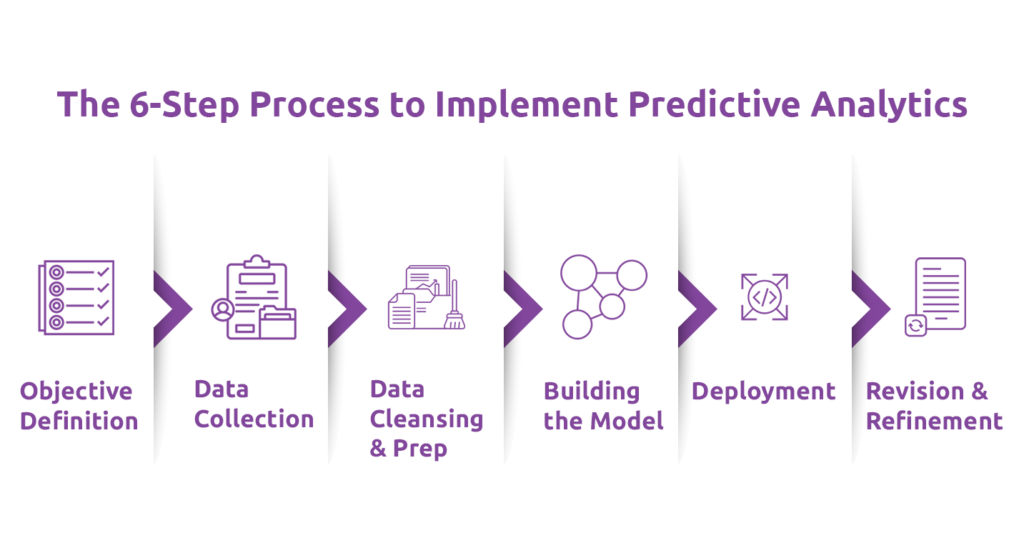
Objective Definition
The first step is to define your project’s objectives, deliverables, scope, and data required. The exact requirement of this project will define its success.
Data Collection
As mentioned above, data is the cornerstone of any analytics project. So it’s imperative to collect all the required data and store them in one place. The data needs to have different types of both current and historical data from multiple sources to improve the quality of the results.
Data Cleansing and Preparation
Clean, prepare and integrate your data to get it ready for analysis. Remove outliers and identify missing information to improve the quality of your predictive data set.
Building the Model
Learning something takes time. The same is true for a predictive model. Allocate sufficient time to build your model and train it on relevant data sets. Test it rigorously and see if it gives out the required results. Multiple iterations may be required to get an error-free model.
Deployment
Once the relevant training is completed and the predictive model is ready, deploy it on the production data set. The results can help in automating data-driven decision-making. Also, the real world results will know about the effectiveness of the system.
Revision and Refinement
Real-time data is what the world is striving for and the predictive analytics system will also get its fair share. It’s important to continuously monitor and improve your model with a robust feedback system.
Predictive Analytics in Action – Certain Real-World Scenarios
This section will explain the problem statement and how predictive analytics help address it.
Employee and Customer Churn
Employees and customers churn because of one simple reason. They’re not satisfied with the environment they work in or the services they receive. Predictive analytics helps analyze the past factors that led to an increase in churn and will predict what’s the probability of future churn thereby giving leaders to proactively address the situation.
Payment Default
Cash flow is the lifeblood of many organizations. A key contributor to a good cash flow is customers who pay on time within the credit period. Predictive analytics help finance leaders analyze whether a customer will pay on time, be late in payment, or the worst-case scenario will default with a confidence score against each customer.
Revenue Generation
A strong sales team is the backbone of continuous revenue generation. Predictive analytics systems can predict a variety of scenarios, right from the success of a deal closing to the possible revenue generated by the team based on past performance. This helps organizations plan in advance not only for sales strategy but also for budgets.
Production Bottlenecks
Preventive maintenance keeps the machines running, literally. Preventive maintenance is scheduled in specific time intervals. However, there are scenarios where machines will stop working for a plethora of reasons. This downtime creates bottlenecks in the assembly line and breakdown maintenance is required to get the machine back up. Predictive analytics help production managers plan for possible breakdown maintenance thereby reducing downtime.
Takeaways to Remember
Fortune 500 companies, big enterprises, and industry leaders are actively investing in predictive analytics tools to counteract the ever-volatile market conditions. Predictive analytics have evolved from absolute luxury to dire necessity, and businesses big or small need to be thinking of investing in predictive analytics if they truly want to become data driven organizations.
Interested to know more about other data analytics terms? Head over to our data glossary page where more data management and analytics-related concepts are discussed.

